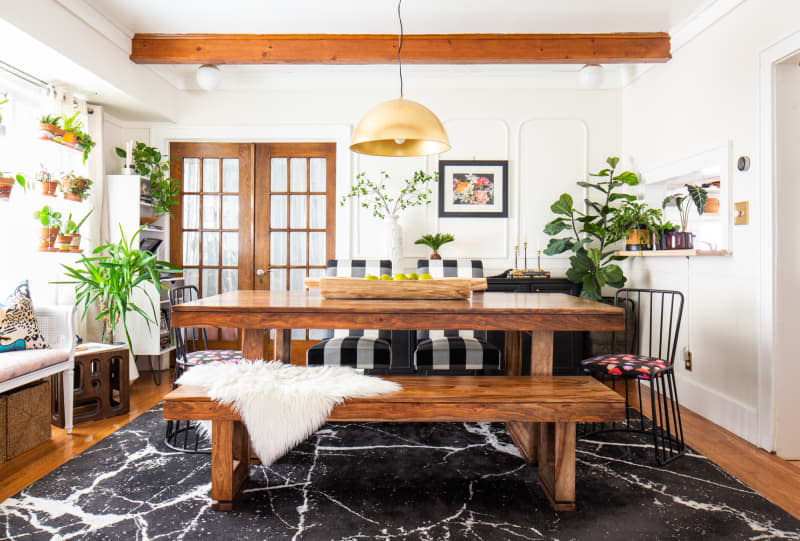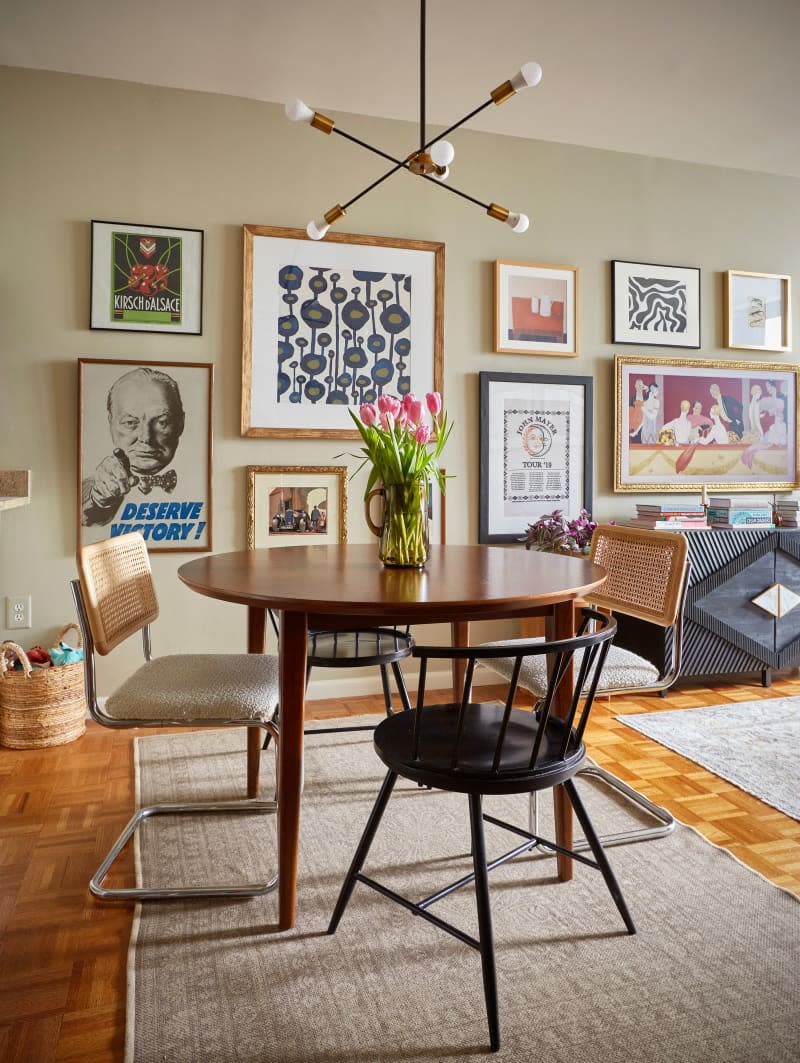The Dining Room Mistake Homeowners Always Make, According to Home Stagers

From casual Friday night board game sessions to elaborate holiday meals — and lots of uses in between — your dining room plays a key role in making your house feel like a home. Despite this room’s vital importance, getting the layout and design right can be tricky.
One area where homeowners always seem to struggle? Lighting.
When Amanda Wiss and her team of home stagers at Urban Staging start preparing a client’s home for sale, they often find themselves raising or lowering the dining room chandelier.
“A chandelier that’s hung too high will feel disconnected from the room, while one that’s too low will get in the way of everyday use of the table,” she says.
If you want to get technical with the height of your dining room chandelier, get out your measuring tape and hang the fixture so that the bottom is between 30 and 36 inches from the top of your dining room table, she says. If you’d rather not go to all that trouble, here’s another trick Wiss recommends: Stand next to your dining room table and make sure the base of the chandelier is in line with the top of your head.
“That way, when you bend over to reach across the table, it’s completely out of your way, but still part of the room’s overall design,” she says.
Positioning aside, homeowners also often make mistakes when it comes to choosing the chandelier itself, says Denise Hall Montgomery, a Berkeley-based residential architect who runs DHM Architecture.
“Too often, a decorative chandelier is chosen without consideration of how the light will affect the appearance of guests seated around the table or if there will be sufficient light at place settings,” she says.

Your guests should be able to clearly see what’s on their plates, but they shouldn’t be momentarily blinded if they glance up while passing the salt and pepper. You also don’t want your dining room light to cast harsh shadows on their faces. So, when shopping for a new chandelier, look for one that diffuses the light, Montgomery recommends.
“Light fixtures that diffuse light — either by obscuring the bulb or bouncing light off the ceiling, for example — can soften shadows and create a more welcoming environment,” she says.
Along those same lines, remember that you will also be using your dining room during the day. If possible, try to place the table near windows to bring in some natural light, suggests Gideon Mendelson, the founder and creative director of Mendelson Group, a New York-based interior design firm.
Other Dining Room Mistakes That Homeowners Often Make
Choosing the wrong paint color. It’s worth it to spend the extra time and effort involved to get samples and paint small sections of walls in different parts of the room, says Jennifer Verruto, founder and CEO of Blythe Interiors. Doing so allows you to see the paint at different times of day and from different angles. “If you have a warm palette and just go with the standard white your painter uses, you could end up with a harsh hospital glow that ruins the aesthetic you have worked so hard to achieve,” she says.
Laying down a rug that’s too small. Homeowners often pick rugs that are the same size as the dining room table — but not big enough to encompass the chairs too, says Wiss. “Your dining room rug should be big enough to accommodate your chairs while pulled out,” she adds. “Nothing ruins a rug faster or causes a bigger safety hazard than a chair that gets caught on the edge of your rug every time someone gets in and out.”
Choosing uncomfortable chairs. If you want your friends to sit through a multi-course meal and stick around for dessert, you have to think about their comfort — and that all boils down to your dining room chairs, says Rebecca Short, senior interior designer at Gabellini Sheppard Associates. “Imagine how comfortable they’ll be after sitting for hours,” she says.
Not giving guests enough room. Anyone sitting at your dining room table should be able to push their chair back, stand up, and get out without needing to do that awkward sideways shuffle between the wall and their neighbor’s chair, says Short. To make this “traffic pattern” possible, she says, you may need to move the table away from the wall a bit.
Using a huge hutch or cabinet. You might be tempted to buy a large, elaborate hutch to hold all of your “good” dishes in the dining room. But this can be a distraction from the room’s real focal point, which is the table, says Wiss. “I always recommend swapping a cabinet for a skinny console table, even if that means a quick decluttering session to sort out dishes you never use,” she says. “This way, you still have a drop spot for hot dishes, flower vases, and other decor or utility items.”

